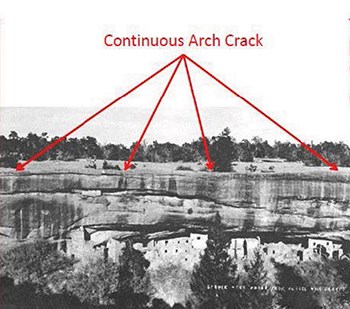|
Near the Chapin Mesa Archeological Museum, on Chapin Mesa (map)

Spruce Tree House, the third largest cliff dwelling (Cliff Palace and Long House are larger), was constructed between about 1211 and 1278 CE by the ancestors of the Pueblo peoples of the Southwest. The dwelling contains about 130 rooms and 8 kivas (kee-vahs), or ceremonial chambers, built into a natural alcove measuring 216 feet (66 meters) at greatest width and 89 feet (27 meters) at its greatest depth. It is thought to have been home for about 60 to 80 people. The cliff dwelling was first discovered in 1888, when two local ranchers chanced upon it while searching for stray cattle. A large tree, which they identified as a Douglas Spruce (later called Douglas Fir), was found growing from the front of the dwelling to the mesa top. It is said that the men first entered the dwelling by climbing down this tree, which was later cut down by another early explorer. Spruce Tree House, Pre-1907 and Spruce Tree House Today 

Left image
Right image

|
Last updated: April 21, 2025
